How to configure SEO Friendly URLs (11 Tips)
Creating SEO friendly URLs is one of the simplest things to get right, but something that too
many digital marketers overlook. Short for Uniform Resource Locator, a URL acts as the
location of a particular web page.
Your URL should satisfy two vital requirements:
- Tell visitors where they are on a website,
- and let visitors know what the page is about.
But a proper URL structure does much more than provide information to your visitors.
It also helps search engines and website designers understand your site’s organization and content.
In this article, we’ll tell you how your URLs impact SEO and some of the ways you can optimize
the URLs on your website.
Your URL should be structured in such a way that it is friendly to both searchers and search
engines. Seems simple enough, right? But, if you want to optimize your URLs correctly, you’ll
need to follow a few best practices.
The Basic Parts of a URL
Each time you browse to a website on the internet, you access a URL. If you’ve ever stared at the URL in your search bar and wondered what it meant, the structure is basic.
URLs are generally composed of three parts:
- The protocol,
- The domain name,
- and the path.
You may or may not have a subdomain and additional folders, such as “blog,” to organize your website.
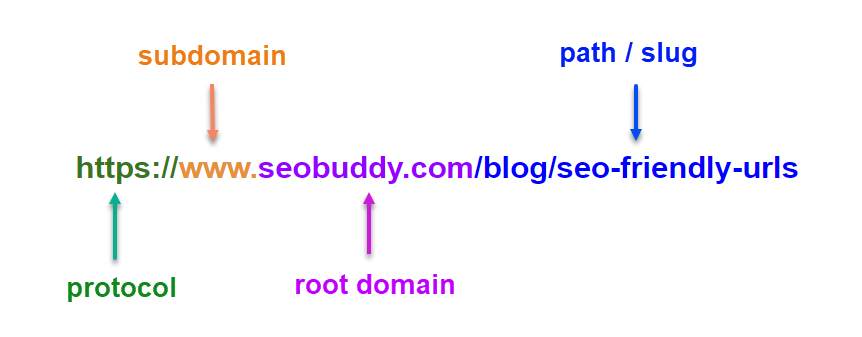
If you’re wondering about the difference between http:// and https:// protocol, it comes down to security. The tiny lock you see to the left of a URL with https:// protocol signifies that the website is using an SSL certificate, which gives it an encrypted connection and a higher level of security.
For more information on upgrading to SSL, check out our SOP 29 and 28 in the SEO Checklist.

For the sake of this tutorial, we’ll focus entirely on the domain name and path parts of your URL. But, before that, you should understand how your URL impacts SEO.
Why URLs are Vital for SEO
If you want to rank well in Google, pay attention to your URL structure. Why? According to Backlinko, URLs are a significant search engine ranking factor for Google. Specifically, among the top 200 ranking factors for Google:
- URL length is #46
- URL path is #47
- URL keyword inclusion is #51
- URL string is #52
URLs serve a variety of purposes. Of course, they’re essential for SEO. But they also instill trust and impact how likely searchers or visitors are to share your links. Simply put, a bad URL structure will affect the credibility and results of your business. A good and optimized URL will help you achieve your goals.
How Do URLs Impact SEO?
While the URLs on your website don’t have a direct effect on your search engine rankings, how you structure them does have the potential to improve your performance and outcome.
Clear URLs can improve Click-Through Rates (CTR)
When a person is browsing the search engine results page (SERPs), they’ll see three things – the name of your page (its meta title), the description of the content (meta description), and the URL (now breadcrumb) for the page.
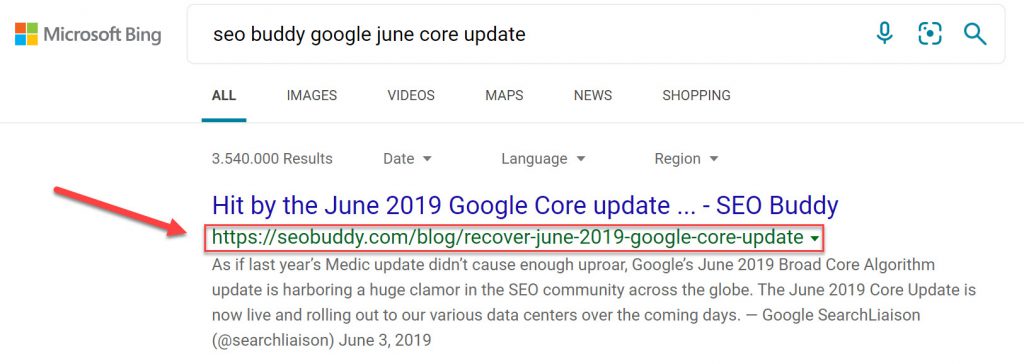
The URL is one-third of what people see in the SERPs, so its content can impact whether or not someone decides to click. If the URL is clear and descriptive, you have a better chance of getting a click vs. one that is garbled and arbitrary.
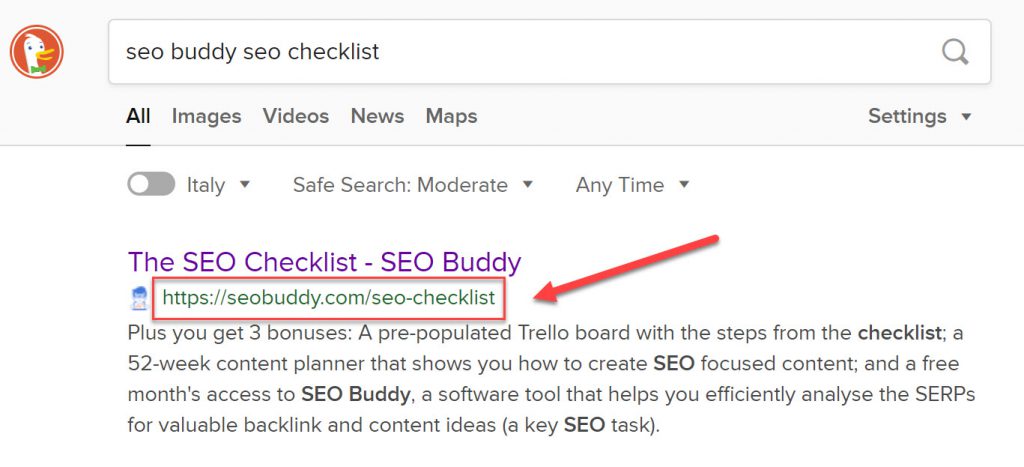
An above-average CTR for your actual position might improve your ranking position as it sends a signal to the search engine that your answer is relevant to their user search intent.
However, it’s important to mention that Google is not any longer showing URL in SERP but Breadcrumbs

Organized URLs Help Search Engines Do Their Work
When your URL structures are organized and clear, search engines find it easier to index your website. This boosts your chances of getting exposure on the web.
Focused URLs Reduce User Confusion
There’s a common misconception that SEO is only technical maneuvering. In truth, having an easy to navigate website is part of SEO because it improves the user experience and will increase activity on your site.
If users are confused about your URLs, they either won’t click or will hit the “back” soon after arriving on your page. You can improve your SEO efforts by giving users what they need and expect with user-friendly URLs.
Get the full SEO Checklist and start taking ALL the steps you need to in order to rank at the top of Google.

John Abott The SEO Checklist by SEOBuddy is awesome. It doesn’t just tell you what you need to do, it walks you through the process.
What are SEO Friendly URLs?
An SEO-friendly URL helps Google figure out what each page on your website is about. It is also intuitive enough that users can understand where they are on your website and make decisions about navigation.
Without knowing the definition, can you identify which URL is the prettier one?
https://seobuddy.com/blog/updating-old-content-seo/
https://seobuddy.com/?aspx=456032304
Easy, right?
For example, in the URLs above, the first one it’s clear that you are on the blog for SEO Buddy and reading a piece about updating old content for SEO. While for the second URL it’s not much clear at all. It hasn’t been optimized for SEO.
You might now say, well this is nice to look at but, at the end of the day, isn’t it most important that my user is directed to the right page rather than what the link looks like? Well, purely looking at it from a functional perspective you are correct.
However, from a UX perspective, pretty permalinks show what a page is all about at a glance – even before checking out the page. At the end of the day, it is a nice and easy way to increase your UI. On top, SEO-wise, URLs are a very important ranking factor. Hence, optimizing your URLs is also crucial for your SEO efforts.
Wait, what exactly are pretty permalinks?
With WordPress, people tend to use the term Permalink and Slug but it’s basically the URL.
“A permalink or permanent link is a URL that is intended to remain unchanged for many years into the future, yielding a hyperlink that is less susceptible to link rot. Permalinks are often rendered simply, that is, as clean URLs, to be easier to type and remember.”
With WordPress, for example, this is very easy to implement.
Simply Go to Settings->Permalinks->Post Name->Save. Done!
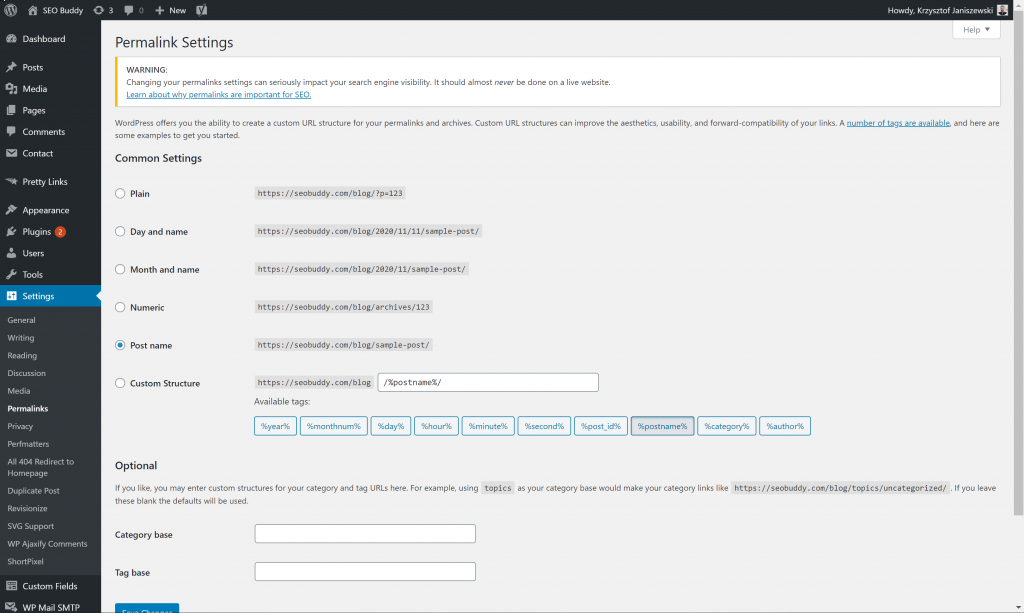
Best Practices to Optimize your URL for SEO
URLs are important to get right from the start. If you mess up, you’ll be forced to revamp your website’s URL structure later, and this can cause trouble with redirect loops. While there’s no one-size-fits-all approach, here are some best practices for SEO friendly URLs you should follow:
1. Choose Your TLD Carefully
It’s generally a good idea to choose a top-level domain (TLD) for your website, preferably a “.com” rather than a .biz, .pro, or something else. Users will generally view these as more trustworthy.
2. Host Your Store and Blog on Your Root Domain
If you have an e-commerce site, it needs to be hosted on your root domain as opposed to a different one. Splitting the two doesn’t make sense from an organization and SEO standpoint.
We said something earlier about clarity, and you’re likely to confuse visitors if you send them to a different domain to buy your stuff.
Likewise, having everything on a root domain is beneficial for SEO. Why? All of your page views, time spent on the website, and search traffic for that part of your website will be ranking factors for your root domain.
The same holds true for your blog, which is a must-have for every brand.
It might be tempting to host a company blog on a free service like Tumblr or Blogger, but it’s an awful idea. First, you won’t own the blog, so could lose the content. Second, all the traffic and SEO benefits would go to Tumblr or Blogger instead of to your website.
Check out what Rise at Seven Co-Founder Stephen Kenwright says on the subject:
3. Secure It
Always secure your URL by using HTTPS instead of HTTP.
It’s not only a ranking factor but something that users now value.
4. Include Keywords in your URL but Avoid Spamming Them
Optimize your URL by including one or two valuable keywords, and place the most important one at the beginning of your URL.
Search engines will respond positively when you use keywords in your page’s URL. But, they also know when you’re overdoing, and the use has become spammy. As a best practice, include your page’s main idea in the URL, but avoid tossing it in there multiple times.
DO: https://www.yoursite.com/blog/seo-tips
DON’T: https://www.yoursite.com/seo/seo-tips/seo-best-practices-list
Another benefit to including keywords in your URL is that those keywords can become anchor text when someone shares your link. (Anchor text is the text used for an outgoing link, and it’s considered a ranking factor). So, when someone copies and pastes your URL onto another site, those keywords can help your SEO efforts.
5. Make It Descriptive
Both visitors and the search engines should be able to make an accurate guess about your page’s content based on its URL.
6. Keep It Short
URLs need to be short and simple. It’s a good idea to limit the number of words in your URL as much as possible. Visitors can still get an idea about your content from the title, description, and by clicking on the link.
According to Google’s Matt Cutts, URLs should be both short and natural. Here is what he said, during an interview with Stephan Spencer, on the subject:
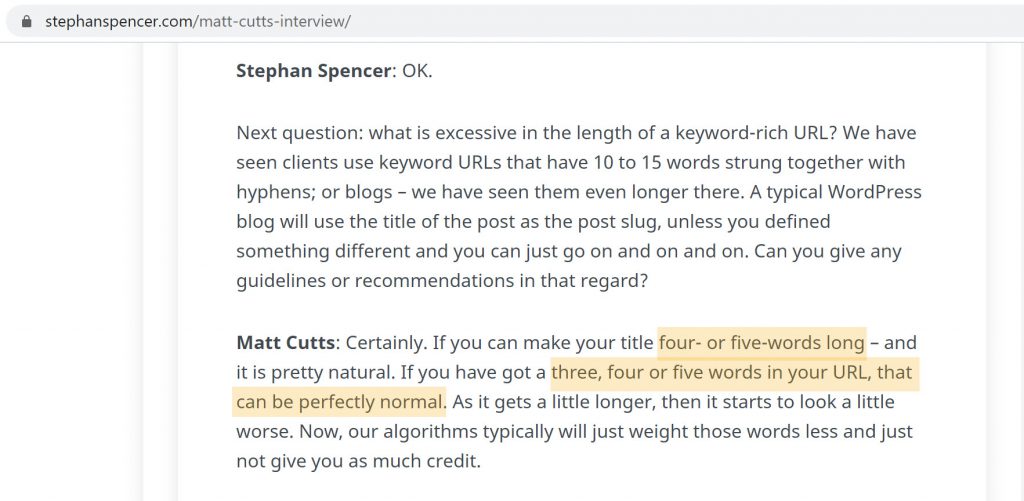
As a general rule, you want to summarize your content using three to five words and limit your URL length to no more than 60 characters. Using this as your guideline, you should be pleased with the results.
7. Use Short Stop Words Only When Necessary
Before you can avoid stop words, you know to know what they are, right? These are words like:
- the
- a
- an
- but
- or
As a best practice with SEO friendly URLs, aim to leave out these words to save space. But, only do it if it makes sense. If your message appears unclear or misleading, go ahead and use your tiny word for clarity.
8. Use “Safe” Characters
When choosing what characters to include in your URL and which ones to avoid, it’s vital that you only use “safe” characters.
What are safe characters vs. unsafe ones?
The easiest explanation is included in the graphic below from Marklogic.
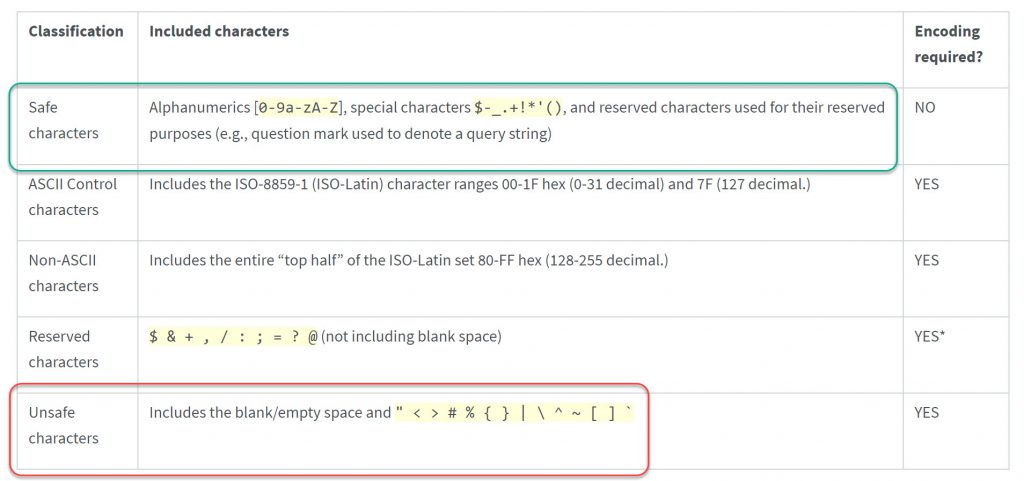
Simply put, using safe characters in your URL is fine as long as they make sense.
But, you want to avoid unsafe characters because they can cause issues with a browser, impacting both the user experience and your SEO.
9. Use Hyphens to separate words
Always use hyphens ( – ) and avoid underscores ( _ ) to separate your words and make your URL more readable.
10. Avoid Uppercase Letters
Never use capital letters in your URL. People generally don’t type in CAPS, but search engines differentiate between uppercase and lowercase letters. It can lead to confusion and loss of page rank.
Using uppercase or a mix of upper and lowercase letters can lead to 404 errors and redirects on some servers.
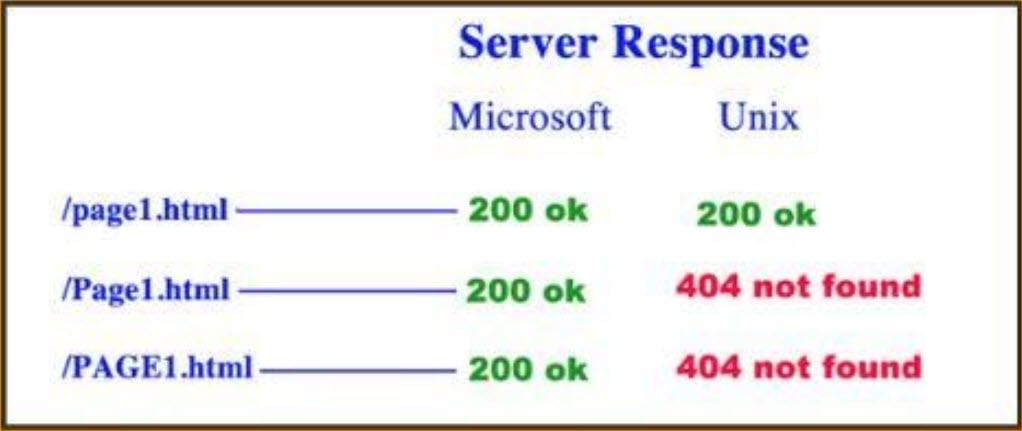
A good rule of thumb is to stick to all lowercase letters.
11. Limit Folders
If you’re not sure what “folders” are, they’re simply the division of your site into different categories (folders) as depicted by slashes in your URL. Using too many categories can make your URL long and your site structure confusing. Try to limit folders to two.
When taken in the context of these best practices, creating SEO friendly URLs might seem complex. But, it’s a manageable process if you consider it logically. Just focus on your main keywords and ideas, keep it brief, and make sure it’s readable.
Similar to most other aspects of URL optimization, keeping things simple is the best strategy when it comes to the number of folders you use.
According to Moz, “It’s not that the slashes (aka folders) will necessarily harm performance, but it can create a perception of site depth for both engines and users, as well as making edits to the URL string considerably more complex (at least, in most CMS’ protocols).”
Consider this example given by Rand Fishkin:
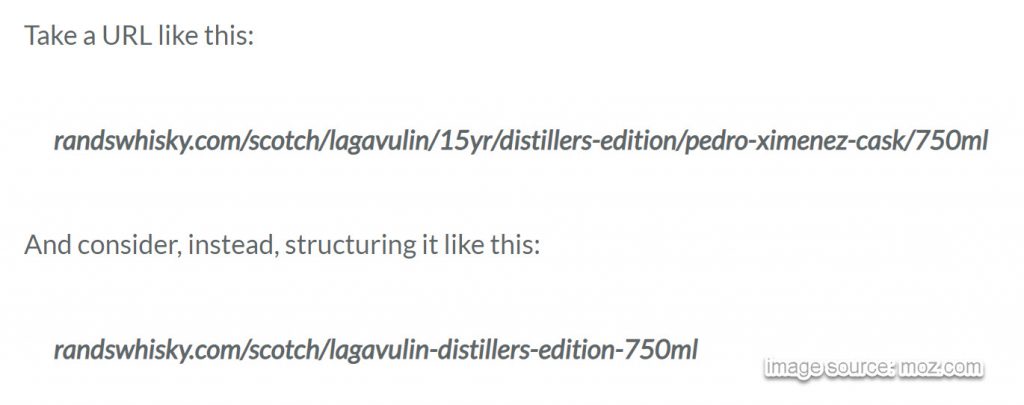
Simple enough, right? Visitors can still figure out what the content on the page is about with the simpler URL, and there are fewer folders.
And, if you need a rule of thumb when it comes to folders, try to stick with just one or two per URL.
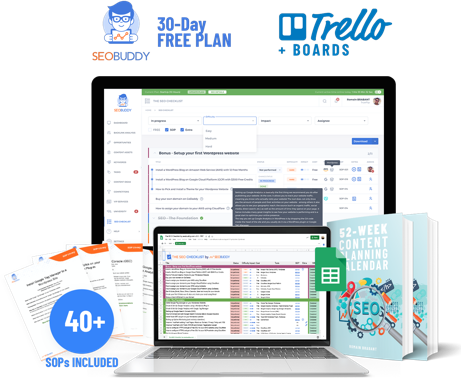
Now it’s time to discover the other 101 steps that will get more organic traffic flowing to your website. Get the SEO Checklist here.
Want to get a sneak peek of what it looks like?
Enter your email and get a free demo version of the SEO Checklist.
Conclusion
The URL optimization process might seem simple on the surface, but it can get a bit complex. You’ll want to address a variety of factors when structuring your URLs so that they appeal to both human users and search engines.
It begins with the process of choosing the right top-level domain and then making it secure with an SSL Certificate. Then, you need to continue the process by choosing the right number of words and characters for clarity.
There is also the issue of proper formatting so that you don’t run into trouble with different browsers. And finally, you have to make sure that you are including your keywords without appearing spammy.
So, it certainly can get confusing.
But, breaking URL optimization down into a step-by-step process makes it more manageable. And some of the items on this list are simple common sense from a clarity and SEO perspective.
Make your URLs simple, readable, and short. Keep these golden rules in mind and you’ll get the results you want.
If you’ve experienced success with any other URL optimization strategies or have any questions, drop us a comment below.




Hey Romain, Your tips for SEO friendly URLs are really effective. Thanks for sharing.
Thanks Aanha
Thanks for sharing!